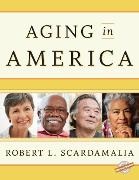En savoir plus
The Baby Boom generation has breached the beginning age of retirement at 65. Today, concerns about the financial stability of Social Security, trends in disability, health care costs and the supply of caregivers are all driven by the coming explosion in population over the age of 65. Aging in America focuses on the economic and demographic portrait of the senior population and attempts to answer the following questions: *What is the socio-economic portrait of the senior population in my community? *How has this population changed over time? *Where are the most diverse or most homogenous communities? *What proportion of the senior population is still working? *What are their incomes? *Is there affordable housing in this area for seniors? *What proportion of seniors provide care for grandchildren? *What is the incidence of disability by type? Aging in America will also include comparative data on other age groups to place indicators of aging in context with the broader population. The Decennial Census and annual American Community Survey form the basis for this aging portrait.These are critical data sources because they are the only sources that provide comparable and comprehensive statistics for all communities across the nation. Many other survey sources exist which add health care and wellness indicators but they do not provide the geographic detail coming from the Census Bureau. Zusammenfassung In light of the aging baby boomer population! concerns about the financial stability of Social Security! trends in disability! health care costs! and the supply of caregivers are all topics at the forefront of conversation. Aging in America focuses on this concern! and presents comparative data that speaks to the broader American population. ...

